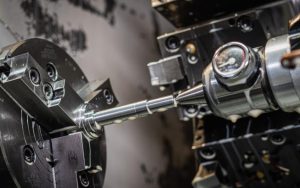Designing a CNC Aluminum Prototype: Essential Guidelines
Introduction
Designing a CNC aluminum prototype requires careful consideration of various factors to ensure optimal functionality, manufacturability, and cost-effectiveness. This guide outlines essential guidelines for designing CNC aluminum prototypes to achieve the desired outcomes efficiently.

Understand Prototype Objectives
Define Project Goals
Before initiating the design process, clearly define the objectives and goals of the CNC aluminum prototype. Determine the intended application, functionality requirements, performance expectations, and testing objectives to guide the design process effectively.
Material Selection
Choose Suitable Aluminum Alloy
Select the appropriate aluminum alloy based on the specific requirements of the prototype. Consider factors such as strength, corrosion resistance, machinability, and cost when choosing the alloy. Commonly used aluminum alloys for CNC machining include 6061, 7075, and 6063, each offering unique properties suited for different applications.
Design Considerations
Optimize Geometry
Design the prototype with optimized geometry to minimize material waste, machining time, and production costs. Utilize features such as fillets, chamfers, and radii to improve part strength, aesthetics, and manufacturability. Avoid sharp corners and complex geometries that may increase machining difficulty and lead to dimensional inaccuracies.
Ensure Adequate Wall Thickness
Maintain uniform and adequate wall thickness throughout the design to prevent issues such as warping, distortion, and machining errors. Avoid excessively thin or thick sections that may compromise part integrity or machining stability. Refer to material-specific guidelines and machining capabilities to determine optimal wall thicknesses.
Incorporate Design for Manufacturability (DFM) Principles
Adhere to Design for Manufacturability (DFM) principles to optimize the CNC machining process and enhance part quality and consistency. Consider factors such as tool access, toolpath optimization, part orientation, and feature tolerances during the design phase to streamline manufacturing and minimize production challenges.
Dimensional Accuracy and Tolerances
Specify Dimensional Tolerances
Define dimensional tolerances and accuracy requirements based on the prototype’s intended function, assembly requirements, and mating components. Consult with the CNC machining service provider to establish achievable tolerances considering the chosen aluminum alloy, machining processes, and part complexity.
Conclusion
Designing a CNC aluminum prototype involves understanding project objectives, selecting suitable materials, optimizing geometry, incorporating design for manufacturability principles, and specifying dimensional tolerances. By following these essential guidelines and collaborating with experienced CNC machining professionals, you can create high-quality prototypes that meet your project requirements effectively. For reliable CNC aluminum prototype manufacturing services, visit CNC Aluminum Prototype to access advanced machining capabilities and expert engineering support.